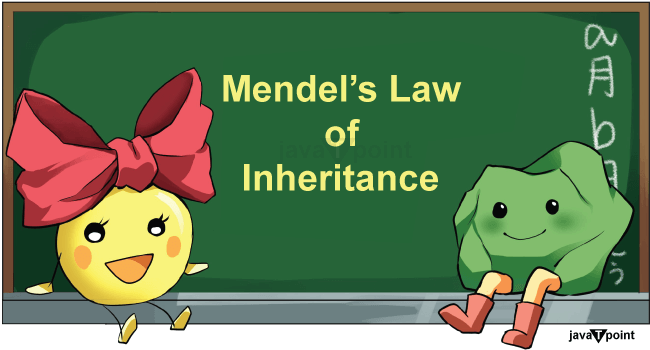Mendel's Law of InheritanceBetween 1856 and 1863, Gregor Johann Mendel, a renowned scientist of the 19th century, conducted studies on the Pisum sativum, or pea plant. He also provided us the laws governing inheritance and observational segregation. We start by defining inheritance. As a result, children inherit their parents' genetic makeup from them. Children acquire traits from their parents that are comparable to their own. A 19th-century monk named Mendel developed this inheritance rule. He was working with a garden pea plant whose scientific name is Pisum sativum that had undergone a hybridization process. and in seven years, 28,000 pea plants were grown. And by doing so, he imparts to us the inheritance law. The law of dominance, the law of independent assortment, and the law of segregation are the three fundamental laws that make up this proposal. Here, we go into detail on each of these. Mendel's Experiment on the Pea Plant
Medal chose the pea plant for the experiment for the following reasons:
In order to understand the laws of inheritance and segregation, Mendel carried out the Monohybrid Cross Experiment and the Dihybrid Cross Experiment. To obtain Mendel's rules, he uses seven opposing characteristics in pea plants. Monohybrid CrossMedal has two pea plants with contrasting characteristics. The first is petite, while the second is tall. And he went over them. He examined every tall plant in the F1 offspring. Then, using F1 progeny, he discovered three tall and one short plant. This finding indicates that Mendel established the laws of dominance and segregation. Dihybrid CrossMendel conducts his subsequent experiment using two characteristics and two alleles. The first is a round, yellow seed, while the second is a round, green seed that has wrinkles. and went over them. 'Round-yellow seeds' were what he saw in all F1 progeny. Round-yellow is the main character, as evidenced by this. He self-pollinated the F1 offspring after that. He then acquired four distinct features: First- round-yellow - 9 Second- round green - 3 Third- wrinkled yellow - 3 Last - wrinkled-green - 1 So, the ratio of 9:3:3:1. This cross will give laws of independent assortment. Law Of DominanceIt is one of Mendel's key laws. According to the law of dominance, the dominating trait in the phenotype will be passed down to the progeny. While some alleles display dominant traits, others have repressed recessive traits. Law Of SegregationThis legislation prohibits the blending of two traits that have crossed in a single hybrid pair. During gamete development, they separate, and during fertilisation, they combine. Thus, each parent will provide one component to the offspring. The phenotypic ratio is 3:1 according to the law of segregation. In this case, both heterozygous and homozygous progeny are dominant. Contrarily, homozygous-recessive characteristics are recessive traits. Law Of Independence AssociationThe two genes segregate independently from other qualities and from each other according to the law of independent association. Therefore, we discovered distinct genes for distinct features and characters. Genes will consequently independently transmit from parents to offspring. This law yields a ratio of 9:3:3:1. Forked-Line MethodIn this approach, the trihybrid cross is examined. As a result, we cross F1 heterozygotes, which we produce by mating AABBCC with aabbcc parents. Prior to segregating alleles on the forked lines, we first generate rows proportional to the number of genes. To obtain the F2 offspring, we multiply the values along each forked path. As a result, we learn that in a trihybrid cross, the F2 phenotypic ratio is 27:9:9:9:9:3:3:3:1. Important Key PointsTo comprehend the laws of Mendel, you must be aware of the following essential information:
ConclusionMendel's law is known to us thanks to seven years of pea plant observation. Three crucial laws are provided by Mendel's law of inheritance: the principles of dominance, segregation, and independent assortment. Additionally, the major goal of this experiment is to determine whether the features are recessive or dominant. And the traits would interact or be passed on across families. Aside from that, the Mendel rules have shown us that DNA may change traits. So, we are aware of Mendel's goals and fundamental principles. We'll learn more about genetic linkages, contraventions of the law of independent assortment, and a lot more.
Next TopicBrain Haemorrhage Treatment
|
 For Videos Join Our Youtube Channel: Join Now
For Videos Join Our Youtube Channel: Join Now
Feedback
- Send your Feedback to [email protected]
Help Others, Please Share









